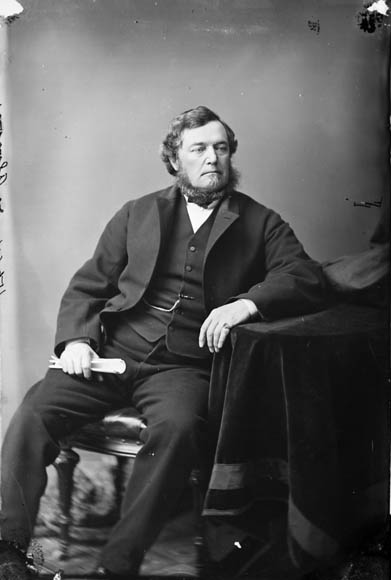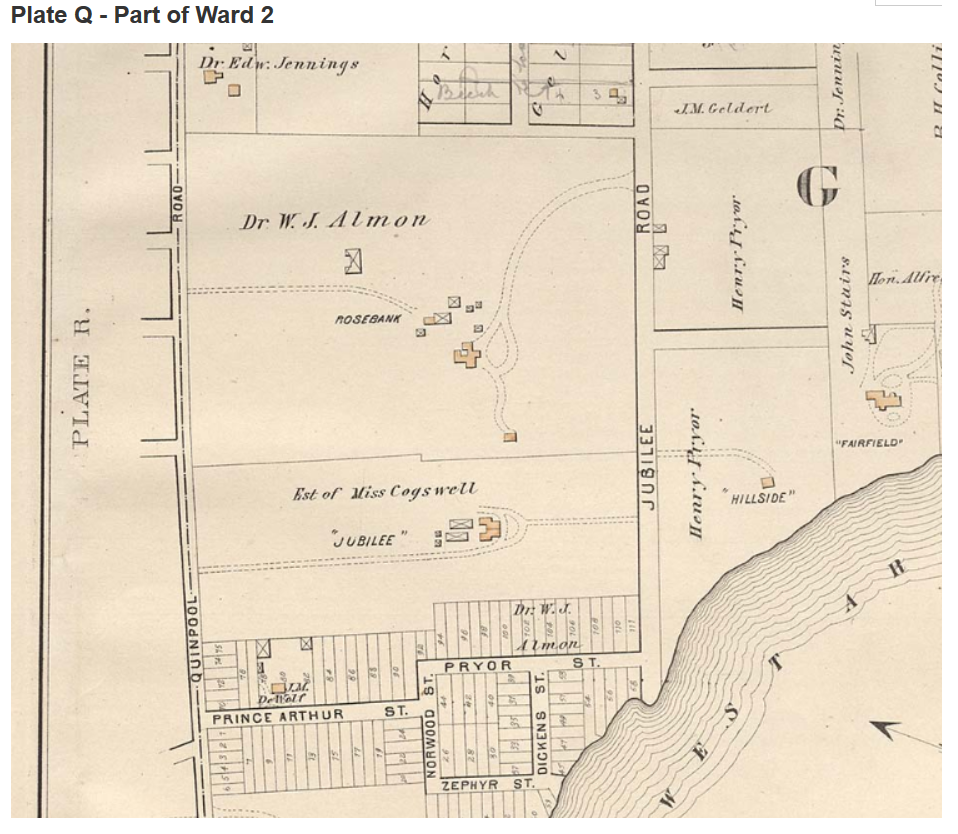Written by Vicky, staff member, Halifax Central Library
If you’ve lived in Halifax for more than a few months, you begin to recite streets like you've always known them. Suddenly you realize: Halifax is a city of names.
But who are these people who have been memorialized along our routes? Today, we'll highlight one of our streets to discover the history behind the name.
Formerly "Paris Street"
Paris Street had originally been a part of the “European Cities” section of the Willow Park Subdivision of Halifax, which includes London Street, Edinburgh Street, Berlin Street, and more. The subdivision was planned as early as the 1870s. At that time, the development was not a successful one and no one lived there, even though the streets had been laid out. Though Almon Street currently runs through the neighbourhood where Paris Street once was, it is speculated that at one point these streets were separate and later joined together as Almon Street expanded.
Originally, Almon Street ran from Gottingen to Robie, and was named sometime before 1865.
The Almon family
In the early days of British settlement in Halifax, Almon would have been a very familiar name. William James Almon, born in Rhode Island in 1755, came to Halifax as an army physician after siding with the British during the American Revolutionary War. In 1783, he settled in Halifax as surgeon to the Ordnance Artillery and Nova Scotia Militia. He was later appointed as physician to the poor house, and served as doctor to visiting royals, including Prince Edward Augustus, the father of Queen Victoria. William James Almon was not the only member of his family to leave an impression in Halifax. Both of his sons thrived in the community.
William James Almon's youngest son Mather B. Almon played a pivotal role in establishing the Bank of Nova Scotia, and later became its President, a position he held for more than thirty years. However, at the end of his tenure, he found himself in the middle of a scandal when it was discovered his good friend and General Manager of the bank, James Forman, had embezzled nearly $315,000 over the course of his employment!
William James Almon’s oldest son, William Bruce Almon, followed in his father’s footsteps and became a doctor. In 1816, he petitioned the House of Assembly for medical supplies to aid 158 black refugees that had been admitted to the poor house hospital and were suffering from dysentery and smallpox. In 1817 upon his father’s death, he took over the position of surgical officer at the poor house. W. B. Almon was a strong supporter of the 1828 Medical Act, which was intended to ensure that only the medically trained could practice in Nova Scotia. Unfortunately, W.B. Almon met a tragic end when he boarded a ship that had arrived in Halifax carrying passengers who were suffering from typhus. In attending to those on the ship, he contracted the disease himself and died shortly thereafter. Though proof of this has not yet been located, one could speculate that the untimely death of William Bruce Almon was the initial catalyst for the street to bear his family name.
William Bruce Almon’s son, William Johnston Almon, also a trained doctor, became well known for his use of chloroform as anaesthesia, and was among the first doctors in North American to do so. He was also one of many Halifax physicians who petitioned the legislature to build a proper city hospital in 1840. Frustrated by lack of progress, he and a handful of other doctors began a private hospital in 1855. In 1868, he became the President of the Faculty of Medicine at Dalhousie College. He was a founder of the Nova Scotia Historical Society, as well as a Member of the House of Commons
The Almon Family was not without controversy. Though several members of the family are noted as having ties to slavery, one of the most blatant was W. Johnston Almon and his vocal support of the Confederacy during the American Civil War. He played a part in the escape of a Confederate pirate and murderer named George Wade. Wade had been part of a group of pirates that successfully captured the Northern ship Chesapeake. When the Chesapeake was reclaimed near Sambro, N.S., Wade’s other crew members abandoned the ship and left him behind. Wade was then brought to Halifax to face justice.
Along with Alexander Keith Jr. and a selection of other upper class Haligonians, William Johnston Almon saw Wade as a hero fighting for the Southern cause. As Wade was brought onto the wharf to be taken into custody, W. Johnston Almon and his crew distracted the police and pulled Wade onto a whaler that was waiting at the dock. A sergeant at the scene drew his pistol, but W. Johnston Almon and the others held him back and wrestled the gun to the ground. In the end, Wade got away. All of those involved in the escape were later acquitted of any charges, claiming they had been acting in the best interest of the public when they saw the Sergeant draw his gun. But, in all likelihood, they really owed their freedom to their high position in Halifax society.
Library resources
To learn more about the Almon family, or about other street names in Halifax, check out the following resources:
“Royal Nova Scotia Historical Society Journal Volume 2 and 3” - Closed Stacks
A Genealogy: The Almons of Halifax and Their Descendants
Part 1 and 2
True Stories From Nova Scotia's Past
Halifax and Dartmouth City Directory 1875-1876 - REF 917.1622 H17
City Atlas of Halifax, Nova Scotia
Online Resources
Dictionnaire biographique, opens a new window
Nova Scotia Archives - Almon Family, opens a new window
James Forman: The fraudster Halifax elite protected, opens a new window
Old Maps Online: Halifax, opens a new window






Add a comment to: What’s in a Street Name? All About Almon Street